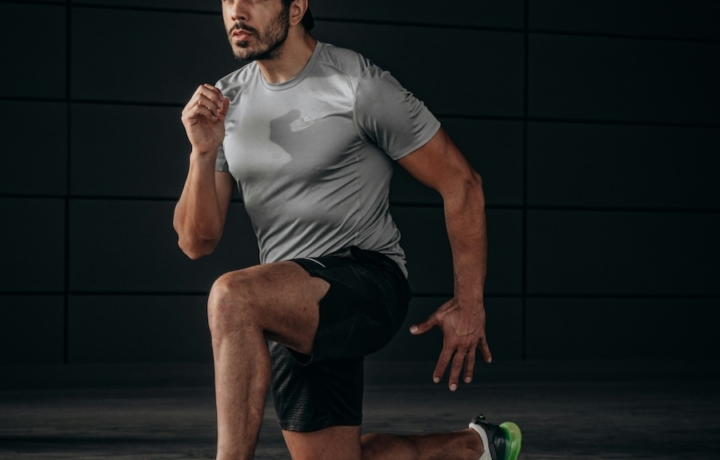Exercise
Levator Scapula Ball

Levator Scapula Ball
How to Perform
- Position a tennis or massage ball on the wall at about neck height or place it on the floor and lie down with the ball under your upper back/shoulder area.
- Identify the levator scapulae muscle, which runs from the upper shoulder blade to the upper neck, and position the ball on a tender area of this muscle.
- Apply gentle pressure to the ball by leaning your body weight into it if against a wall, or by resting your body weight on it if on the floor.
- Breathe deeply and relax as you maintain pressure on the trigger point, exhaling as you sink deeper into the release.
- Slowly rotate your head away from the side being treated to increase the stretch on the levator scapulae while maintaining pressure on the ball.
- Hold this position for 30-60 seconds, continuing to breathe normally and allowing the muscle to gradually release.
- Perform small movements by nodding your head "yes" or shaking your head "no" to address different fibers of the muscle while maintaining pressure.
- Slowly release the pressure, move the ball to another tender spot within the same muscle area, and repeat the process until you've addressed the entire levator scapulae region.
Important information
- Start with light pressure and gradually increase as the muscle begins to release; never force through sharp pain.
- Keep your breathing slow and controlled throughout the exercise to help facilitate muscle relaxation.
- Maintain proper alignment of your spine when performing this exercise to avoid compensating with other muscles.
- If you experience numbness, tingling, or shooting pain, remove the ball immediately and reposition it to a less sensitive area.

Levator Scapula Ball
Exercise Details
Primary Muscles
Muscle Groups
Mechanic
Risk Areas
Built for progress
Take the guesswork out of training
Create personalized AI-powered workout plans that evolve with you. Train smarter, track every rep and keep moving forward, one workout at a time.






The Levator Scapula Ball technique offers a targeted approach to addressing one of the most common areas of tension in today's desk-bound world. This intermediate-level mobility exercise specifically targets the levator scapulae muscle, which runs from the upper scapula to the cervical spine, alongside engaging the trapezius muscles and neck. When this muscle becomes chronically tight: often from prolonged sitting, computer work, or stresss and it can contribute to that characteristic "computer neck" pain and limited range of motion many experience. What makes this technique particularly effective is its versatility across training phases. As a warm-up element, it helps prepare the upper body for overhead movements and exercises requiring thorough shoulder mobility.
During recovery or cool-down sessions, it assists in releasing accumulated tension, potentially reducing post-workout stiffness and encouraging better tissue quality in an area notorious for developing trigger points. The beauty of using a ball for this purpose lies in its ability to provide specific, sustained pressure that helps release fascial restrictions and muscular knots that hands alone might struggle to address effectively. This approach allows for a form of self-massage release that can be adjusted based on individual sensitivity and need: making it accessible despite being classified at the intermediate level. Research suggests that targeted mobility work on the levator scapulae can contribute to improved posture, reduced cervical pain, and enhanced overhead movement patterns.
Regular implementation, even for brief 2-3 minute sessions, may help counteract the negative postural adaptations common in our technology-driven environment. For those experiencing chronic neck tension or anyone engaged in activities requiring significant upper body engagement, incorporating this technique into a comprehensive mobility routine represents a evidence-based approach to maintaining tissue quality and function. The levator scapulae, despite being relatively small, plays an outsized role in neck comfort and upper body mechanics, making this focused attention well worth the effort.
FAQ - Levator Scapula Ball
This technique primarily targets the levator scapulae muscle that runs from your upper shoulder blade to your neck, while also engaging the upper trapezius muscles and cervical spine tissues. These muscles commonly develop tension from computer work and poor posture.
Place a tennis or lacrosse ball between your upper shoulder blade and a wall, slightly toward your neck. Apply gentle pressure and slowly nod your head in small movements to locate tender spots. When you find one, maintain pressure for 20-30 seconds while continuing to breathe normally.
Aim to incorporate this technique 2-3 times weekly for maintenance, or daily if you're actively addressing neck tension or poor posture. Even brief 2-3 minute sessions can be effective, making it ideal to perform before workouts involving overhead movements or after long periods of sitting.
This technique should be approached cautiously if you have existing neck injuries or chronic pain. Start with very gentle pressure using a softer ball, and stop immediately if you experience radiating pain, numbness, or tingling. Consult with a physical therapist before attempting if you have diagnosed cervical issues.
Avoid applying excessive pressure that causes sharp pain rather than productive discomfort. Don't roll directly on the spine or aggressively on the neck. Many people also make the mistake of rushing through tender spots instead of maintaining sustained pressure to allow for tissue release.






